Maras and Moray are two unique destinations in the Sacred Valley that reveal the brilliance and beauty of the Inca legacy. Surrounded by sun-drenched mountains and villages full of tradition, these sites hold stories that blend nature, culture, and mystery. Traveling to Maras and Moray is not just about visiting archaeological remains or admiring landscapes — it’s about living an experience that connects the past with the living essence of Peru.
Exploring Maras and Moray means stepping into a world where science, art, and spirituality come together. In this blog, you’ll find everything you need to know about these remarkable places and the surrounding archaeological sites to enjoy a complete and meaningful experience in Cusco, Peru.
Table of contents
- What Is the Sacred Valley of the Incas?
- Maras, the Village of Salt Mines and Light
- Moray, the Incas’ Secret Laboratory
- Other Attractions in the Sacred Valley of the Incas
- Must-See Stops on Your Maras and Moray Route
- Entry Requirements for Maras and Moray
- How to Get to Maras and Moray
- Tours and excursions to Maras and Moray
- The Eternal Charm of the Sacred Valley
- Frequently Asked Questions
- You may be interested in:
What Is the Sacred Valley of the Incas?
The Sacred Valley of the Incas is a geographical region located about 2,800 meters (9,186 feet) above sea level, known for its pleasant, temperate climate that makes it ideal for agriculture. This fertile valley includes picturesque towns such as Pisac, Urubamba, Ollantaytambo, Chinchero, Maras, Calca, and Yucay — each with its own natural beauty, living traditions, and preserved Inca heritage.
During the Inca Empire, the Sacred Valley was a major agricultural, spiritual, and political center. Its fertile lands and the presence of the Urubamba River, known in Quechua as Wilcamayu or “Sacred River,” made it an essential space for the economic and religious life of the Andean world.
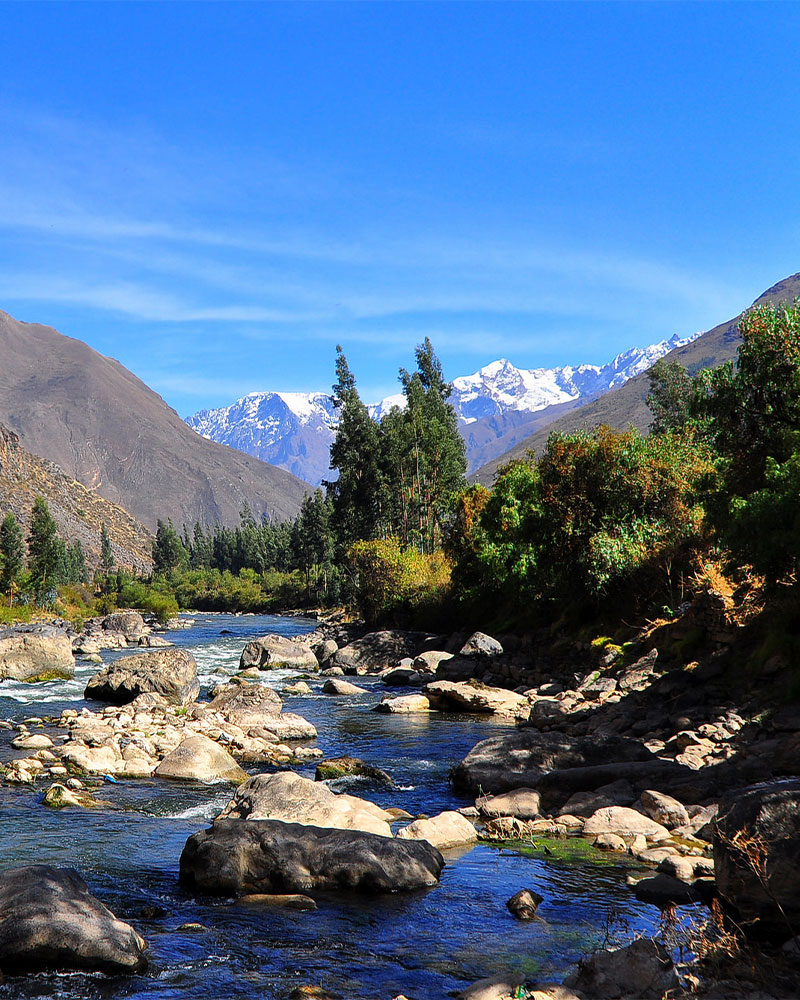
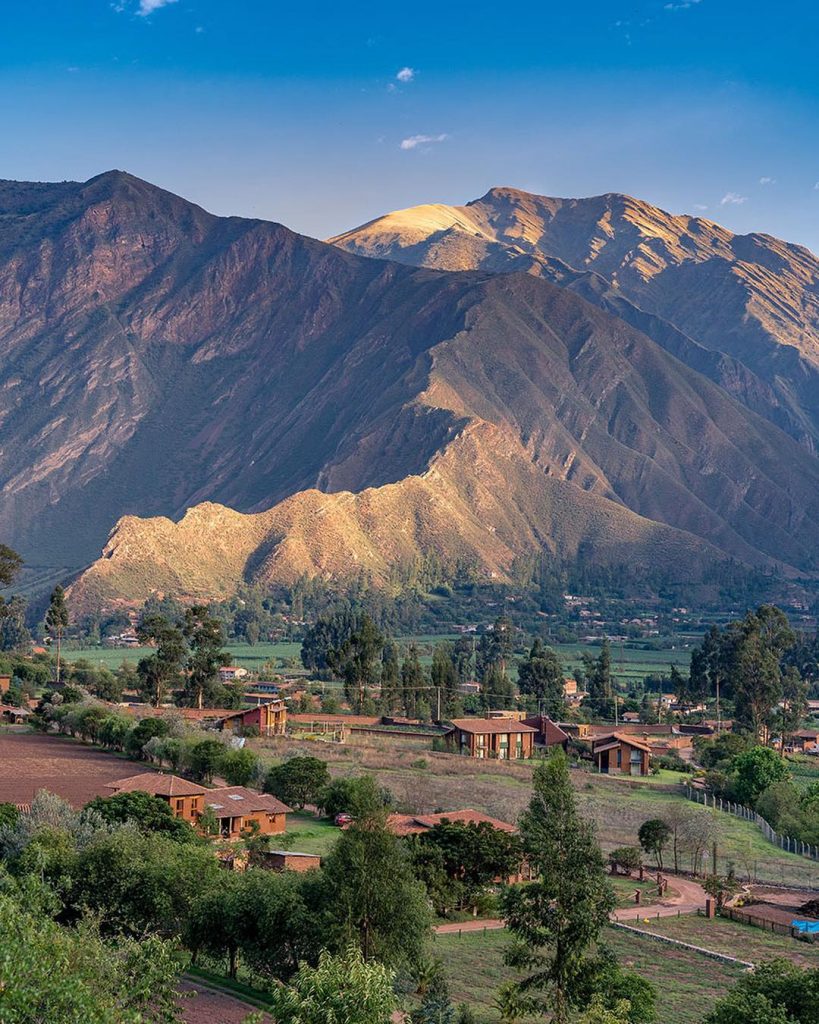
What Makes the Sacred Valley of the Incas So Special?
What makes the Sacred Valley truly special is how it blends history and natural beauty. Here, the Incas built agricultural terraces that still stand today, stone temples aligned with the sun, and ancient paths that connect to other iconic sites such as Maras and Moray. Every corner holds evidence of the Incas’ ingenuity and their deep connection with the earth.
In recent years, the valley has also become a haven for wellness and spiritual retreats. Many visitors take part in Ayahuasca or Wachuma (San Pedro) ceremonies guided by local experts, or choose yoga and meditation retreats in places like Pisac, Urubamba, and Calca. These experiences merge ancestral wisdom with modern healing practices, creating the perfect setting to reconnect with yourself and the powerful energy of Peru’s Sacred Valley.
To learn more about Ayahuasca and Wachuma ceremonies, we recommend our blogs: “Ayahuasca, Liana of The Souls” and “Sacred Power Plants: San Pedro.”
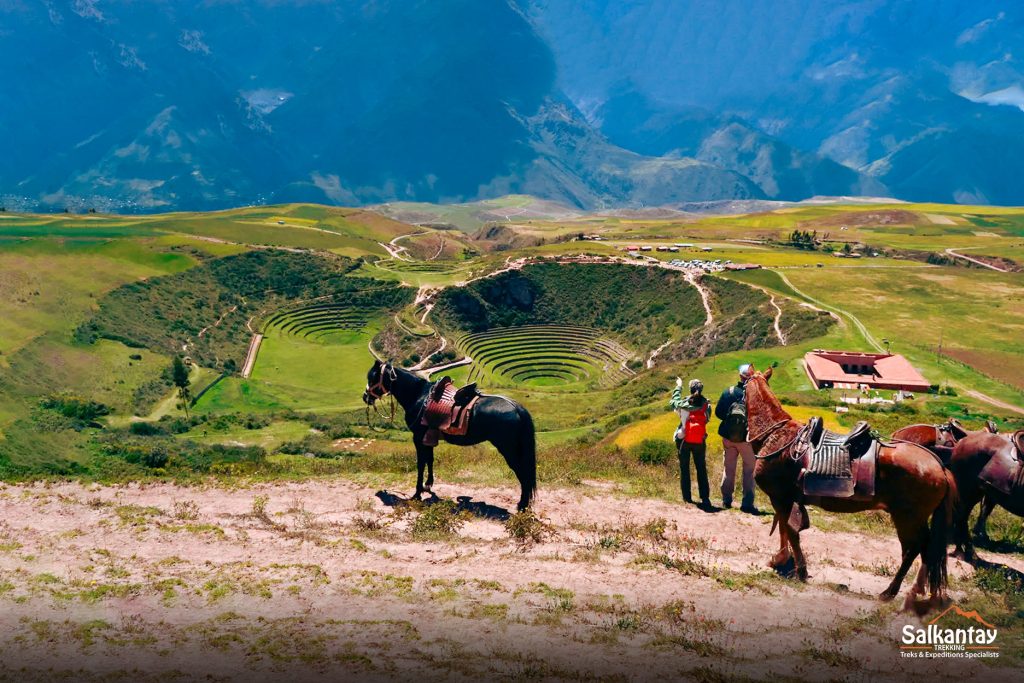
Quick Guide to the Sacred Valley of the Incas
Before exploring Maras and Moray, it’s worth getting to know a bit more about the fascinating environment that surrounds them. The following summary will help you understand why the Sacred Valley was one of the most important regions of the Inca Empire.
| Aspect | Description |
| Location | It stretches between the towns of Pisac and Ollantaytambo, north of the city of Cusco. It is part of the Urubamba River basin and is surrounded by the Andes Mountains. |
| Average Altitude | Between 2,800 and 3,000 meters above sea level (9,186–9,842 ft), which makes it milder and more habitable than the city of Cusco (3,400 m / 11,154 ft). |
| Climate | Mild and dry, with sunny days and cool nights. The dry season runs from May to October, ideal for exploring its towns and archaeological sites. |
| Landscape | Fertile valleys, agricultural terraces, snow-capped mountains, rivers, and traditional villages. It is one of the most productive agricultural areas of the Andean highlands. |
| Main Archaeological Sites | Pisac, Ollantaytambo, Moray, Maras Salt Mines, Chinchero, and Yucay — all showcasing the Inca mastery of engineering, agriculture, and social organization. |
| Living Culture | Communities that preserve the Quechua language, traditional weaving, ancestral farming practices, and local festivals such as Virgen del Carmen and Inti Raymi. |
| Recommended Activities | Cultural tours, photography, cycling, hiking, visits to artisan workshops, culinary experiences, spiritual retreats, outdoor yoga, and wellness tourism. |
| Access | It can be reached from Cusco by private vehicle or organized tours. The towns within it are located along the route to Machu Picchu, making it a must-stop destination. |
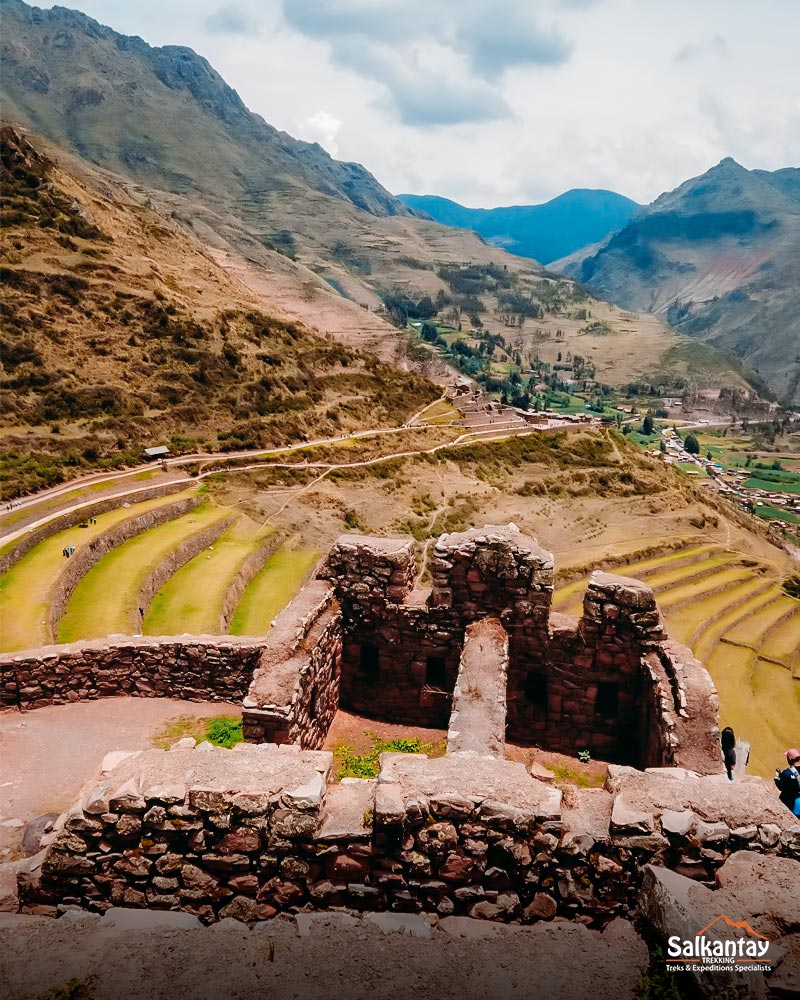
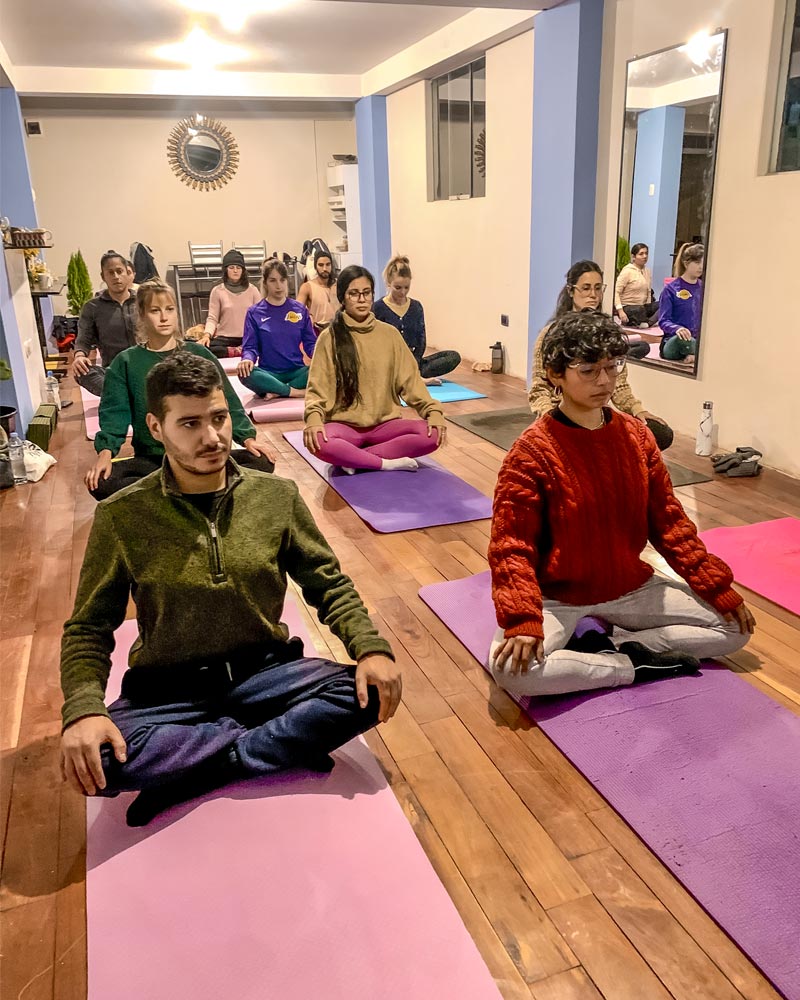
Maras, the Village of Salt Mines and Light
About 50 km (31 miles) from Cusco, in the heart of the Sacred Valley of the Incas, lies Maras, a village that glows beneath the Andean sun. Its fame comes from the Maras Salt Mines (Salineras de Maras) — a breathtaking site with over 4,500 salt ponds (according to Peru’s Ministry of Tourism, MINCETUR), forming a shimmering white-and-gold landscape on the slopes of Qaqawiñay Mountain.
These terraces, arranged along natural slopes of about 20 degrees and covering roughly two hectares, are fed by saltwater from a nearby spring. Through a network of man-made channels, the water flows into each pond. Under the strong Sacred Valley sun, the water slowly evaporates, leaving behind white and pink salt crystals that sparkle like ancient mirrors in the mountain light.
A Legacy Older Than the Inca Empire
The origins of Maras date back to pre-Inca times, when the Wari civilization (500–1100 AD) built the first pools to harness the salty spring that flows from the mountain. Later, under the Inca Empire, the system was expanded and perfected with a network of terraces and channels — much of which still functions today. This enduring hydraulic masterpiece showcases Andean ingenuity and the deep connection ancient cultures had with nature.
A Living Tradition
Although direct access to the ponds is now restricted for preservation, visitors can safely observe the salt-harvesting process from the Maras viewpoint. The famous pink Maras salt is prized for its purity and high mineral content.
Today, the Maras salt mines are managed by 633 local families, who continue to harvest the salt by hand using ancestral methods. Each family maintains its own set of ponds and participates in the collective production and trade of salt — a true symbol of identity and pride for the community.
Visiting Maras is more than just admiring a stunning landscape — it’s about witnessing a story of heritage, hard work, and respect for the earth. Here, sunlight, salt, and human effort come together to tell one of Cusco’s most authentic and enduring stories.
Health Benefits of Maras Salt
Extracted from ancient terraces in the Sacred Valley, Maras salt is valued for its purity and balanced mineral composition. It contains less sodium chloride than regular table salt and is rich in calcium, magnesium, zinc, and iron, which help regulate blood pressure and improve circulation. Many visitors use it in relaxing salt baths that rejuvenate the body and relieve stress.
Its mineral richness also offers therapeutic benefits for the skin and joints. It is often used in natural treatments for varicose veins, psoriasis, mild wounds, arthritis, and arthrosis, thanks to its healing and anti-inflammatory properties. For this reason, Maras salt is not only a prized culinary ingredient but also a natural source of well-being and balance.
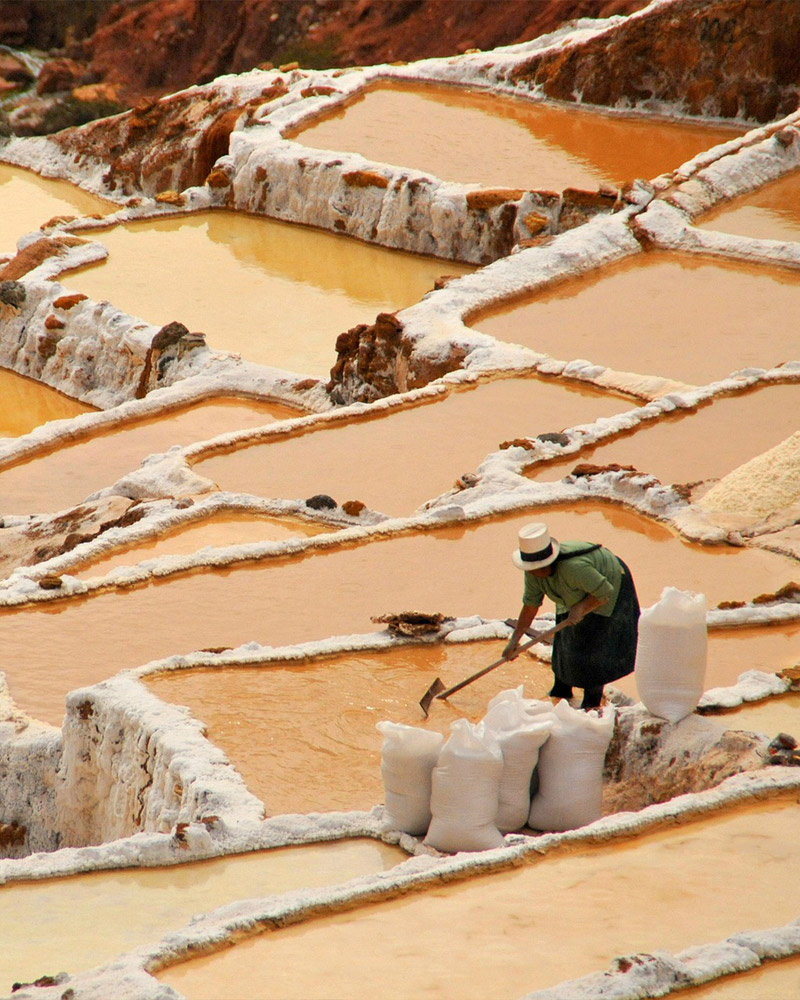
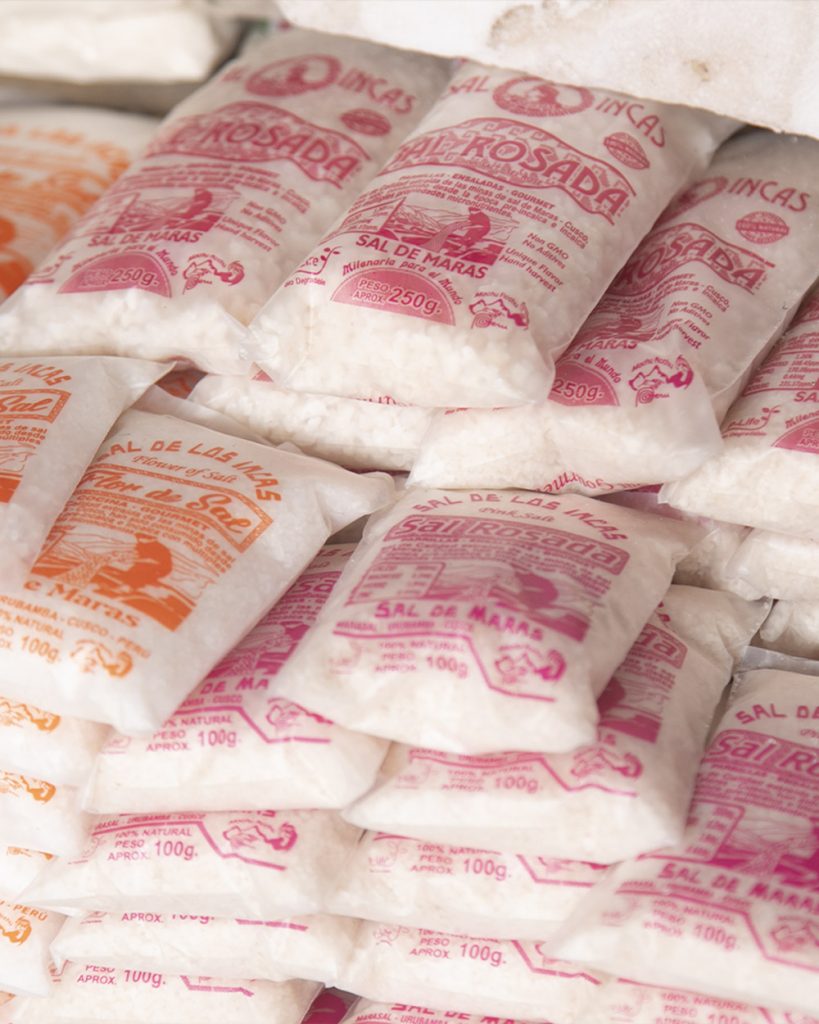
Moray, the Incas’ Secret Laboratory
Just a few kilometers from Maras, hidden among rolling hills, lies Moray, one of the most fascinating archaeological sites in the Sacred Valley. From above, its design is striking — a series of circular terraces descending toward a central platform, resembling an ancient amphitheater. At first glance, it looks like a work of art, but in truth, it’s a brilliant example of Inca agricultural science.
An Agricultural Experimentation Center
Archaeologists believe Moray served as an agricultural research center, where the Incas studied ideal growing conditions. Each terrace level, or “ring,” has its own microclimate, with a temperature difference of up to 5°C (41°F) between the top and the bottom. This allowed them to simulate various ecological zones within one site — perfect for testing and improving crops like corn, potatoes, and quinoa across different altitudes of the Andes.
Moray reveals the Incas’ advanced understanding of agronomy, engineering, and ecology. The irrigation and drainage systems were built with remarkable precision, preventing water from pooling and damaging the terraces. It stands today as a stunning fusion of science, sustainability, and spirituality in Inca culture.
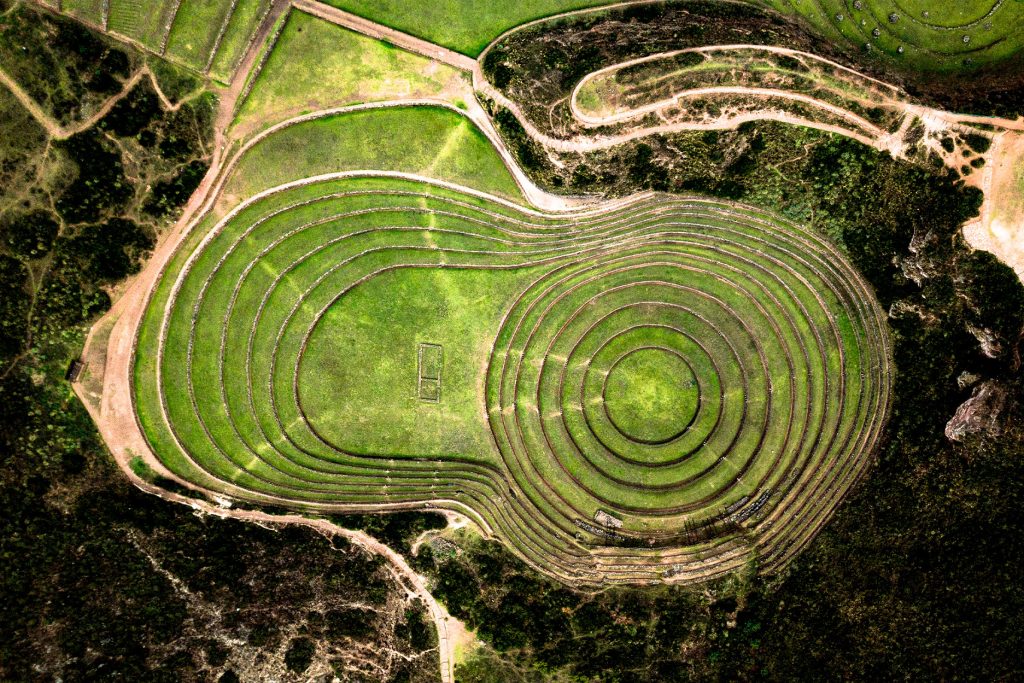
Symbolism and Connection to the Earth
Beyond its scientific purpose, Moray held a deep spiritual meaning. Its spiral-shaped design, descending toward the center, symbolizes the connection between humans, the earth, and the cosmos. Many visitors describe the site as an energetic portal or natural balance point, where one can feel the peace and harmony of the Andean landscape.
The silence of the valley and the geometric perfection of the terraces invite reflection. From the main viewpoint, the panoramic view reveals the full beauty of Inca design. It’s no wonder Moray is considered one of the most photogenic and spiritual sites in Cusco.
Wata Qallariy: The Andean New Year in Moray
Every year, as the sun begins to shine stronger over the Sacred Valley, Moray becomes the stage for one of the most symbolic events of the Andean calendar: Wata Qallariy, meaning “beginning of the agricultural year” in Quechua. It’s a sacred time when local communities give thanks to Pachamama (Mother Earth) for past harvests and pray for abundance in the new cycle.
Each August, this ancestral ceremony brings together locals, travelers, and community leaders in a vibrant celebration of gratitude and renewal. According to Andean cosmology, Moray’s circular terraces represent the womb of the Earth, the place where life is reborn and transformed. There’s no more sacred setting to mark the start of the agricultural year than this ancient Inca laboratory, where past and present meet in harmony with nature.
A Must-See Visit
Exploring Moray means stepping into the mind of a civilization that learned to master nature without destroying it. The experience blends history, science, and mysticism, making it ideal for travelers who want to understand the deepest legacy of the Sacred Valley of the Incas.
If you visit Cusco, be sure to include this archaeological site on your route. Watching Moray’s circular terraces at sunset, when the light bathes the stone rings, is one of those moments that stays with every traveler forever.
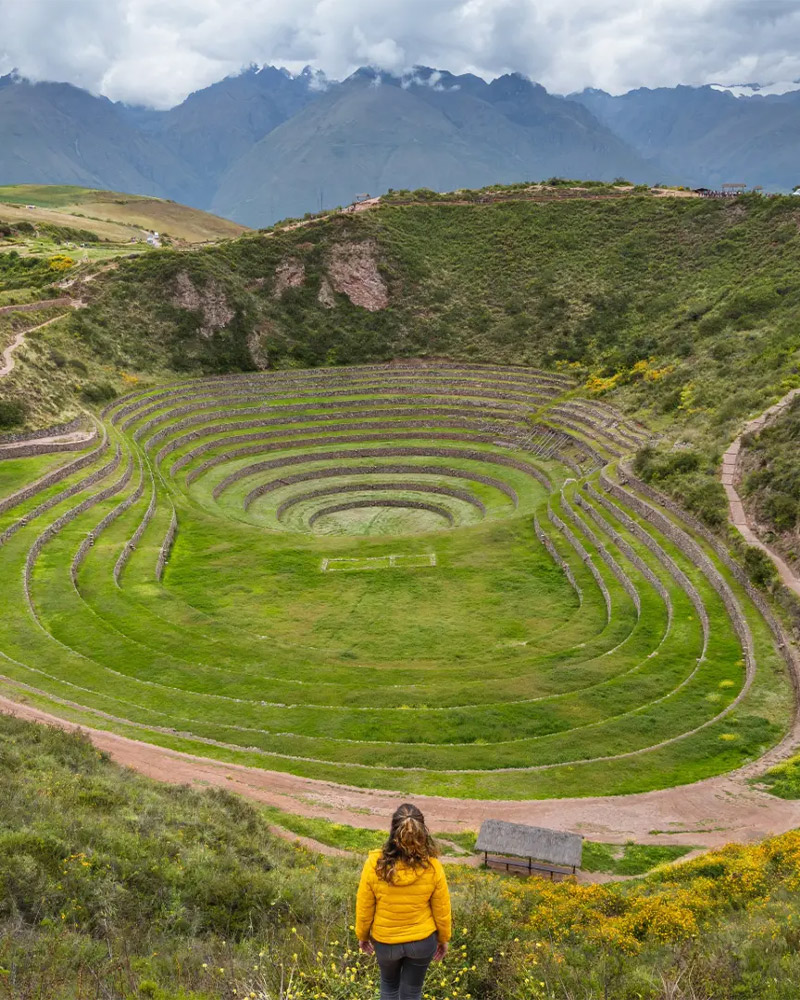
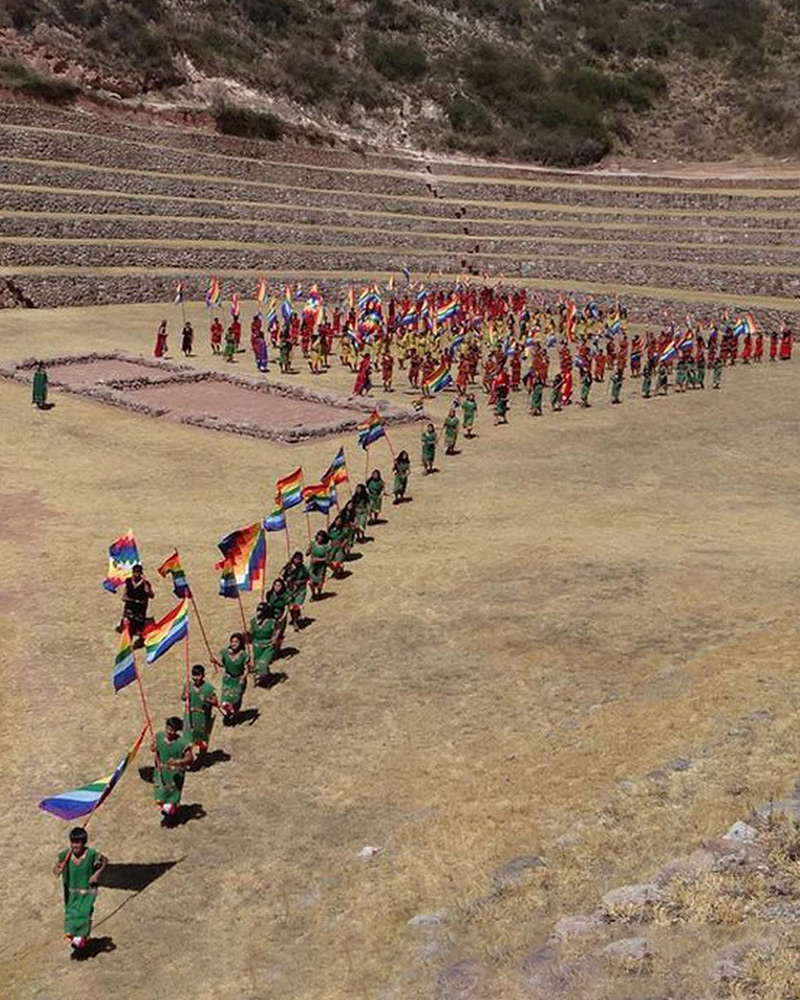
Other Attractions in the Sacred Valley of the Incas
If you visit Maras and Moray, you’ll likely explore other highlights of the Sacred Valley of the Incas — a land rich in history, breathtaking landscapes, and living traditions. Each stop reveals a different facet of the Andean legacy, blending culture, adventure, and local life.
Here are some must-see destinations you can include on your Sacred Valley route from Cusco:
Chinchero: The Living Art of Andean Weaving
Located at 3,700 meters (12,139 feet) and about 30 km (18.6 miles) from Cusco, Chinchero is famous for its traditional weaving workshops and impressive archaeological site, where Inca ruins coexist with colonial buildings. Known as “the land of the rainbow,” this charming village offers one of the most authentic experiences in the Sacred Valley — where ancient traditions continue to thrive among mountains and looms.
Ancestral Weaving Art
The women of Chinchero are masters of traditional Andean weaving. In the Awana Wasi (Weaving Houses), they demonstrate how they spin alpaca and sheep wool, dye it using plants, flowers, and natural minerals, and weave intricate designs that tell ancestral stories.
Joining one of these community-based tourism experiences allows visitors to learn, share with local families, and appreciate the symbolic meaning behind each color and pattern in Andean culture.
An Archaeological Site Between Two Eras
The Chinchero archaeological complex blends Inca and colonial architecture in perfect harmony. Visitors can explore agricultural terraces, finely carved stone walls, and the Colonial Church of Our Lady of Monserrat, built atop an ancient Inca temple. From its viewpoints, you can enjoy spectacular views of the Salkantay and Veronica snow-capped mountains.
Visiting Chinchero means immersing yourself in the heart of the Andean world, where tradition, wisdom, and nature come together in one of the Sacred Valley’s most soulful places.
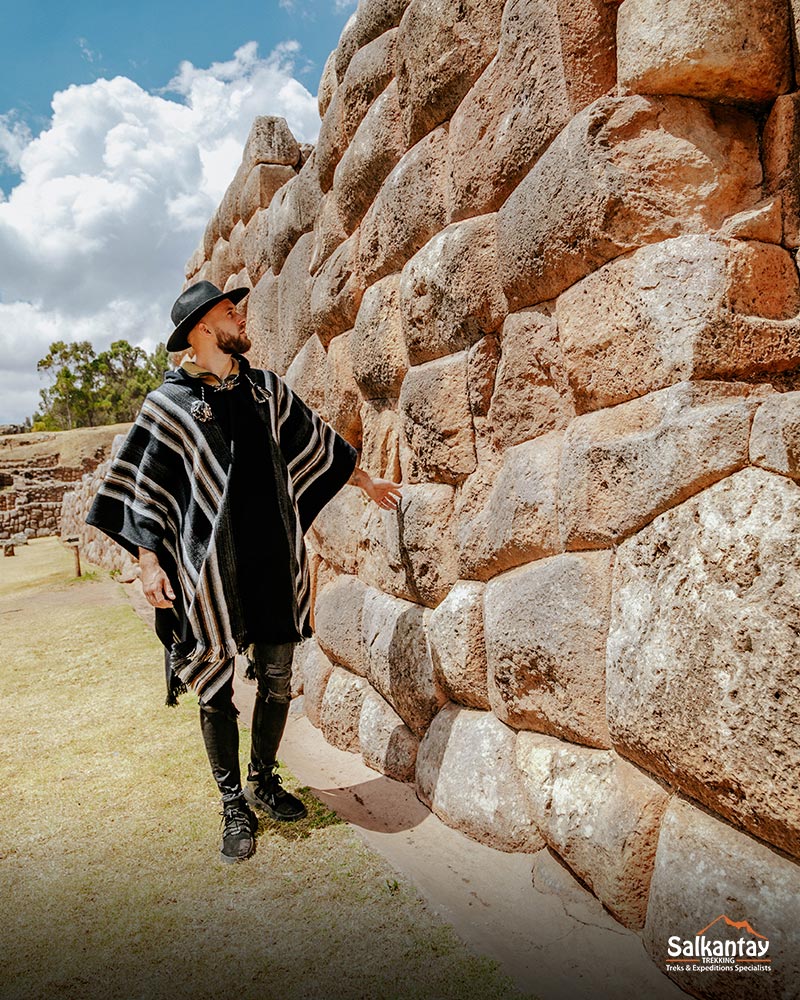
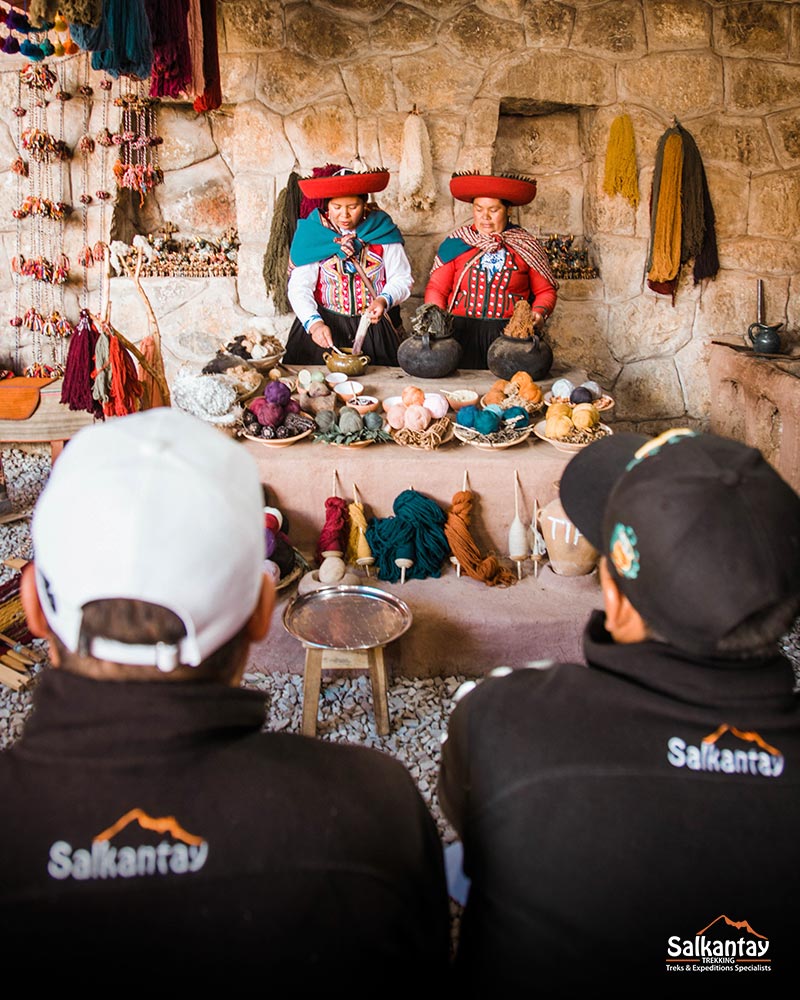
Ollantaytambo: the living Inca city
About 60 km (37 miles) from Cusco, on the banks of the Urubamba River, lies Ollantaytambo — an architectural gem that combines history, culture, and daily life. Known as the “living Inca town,” it still preserves its original urban layout, with cobblestone streets, running water channels, and houses built on Inca foundations.
The Ollantaytambo archaeological site is renowned for its massive terraces, carved temples, and strategic viewpoints overlooking the valley. It likely served as both a fortress and ceremonial center, as well as a vital hub for trade and defense in the Inca Empire.
Walking through Ollantaytambo feels like stepping back in time — every stone tells a story of resilience and ancestral wisdom. Today, it’s also the gateway to Machu Picchu, as trains to Aguas Calientes depart from its station.
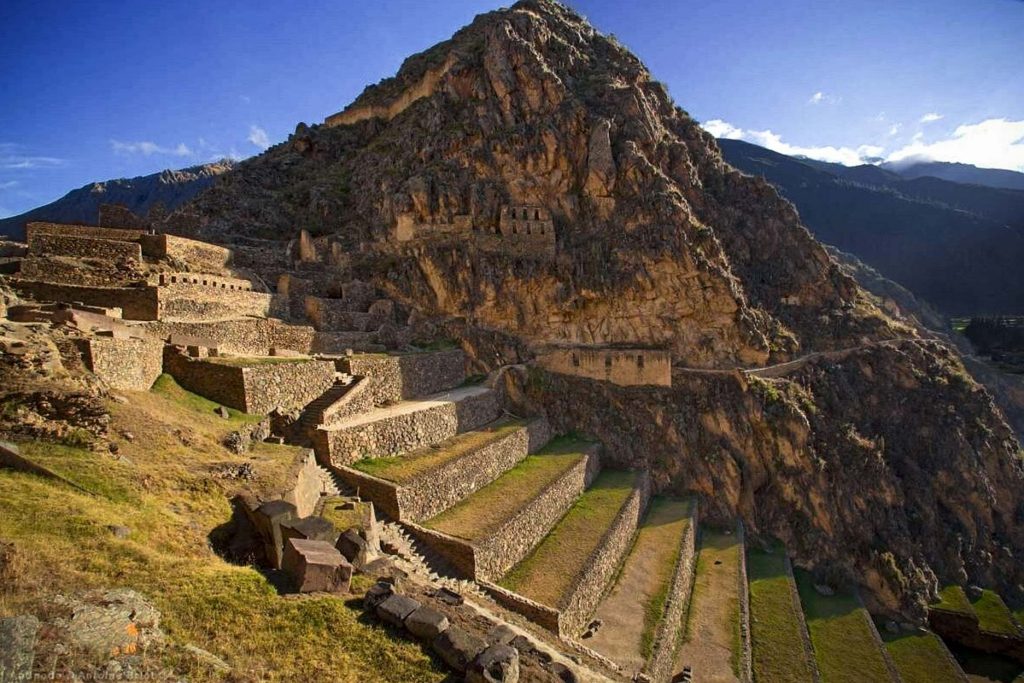
Pisac: the city of terraces and towers
Just 33 km (20.5 miles) from Cusco, Pisac marks the entrance to the majestic Sacred Valley of the Incas. This Andean town perfectly blends history, spirituality, and everyday life. Surrounded by mountains and agricultural terraces, it’s one of the valley’s most picturesque and culturally rich destinations.
The Pisac archaeological site is one of the largest in the Inca Empire. Its terraced hillsides, temples, and lookout points reveal the Incas’ agricultural precision and deep environmental knowledge. From the summit, panoramic views of the valley and the Urubamba River are simply breathtaking.
In the heart of town, the Pisac artisan market bursts with color and creativity. Visitors can find traditional textiles, silver jewelry, and ceramics, all handmade by local artisans. Exploring its stalls and meeting the craftspeople offers a true connection to the living culture of Cusco, where every piece carries centuries of meaning.
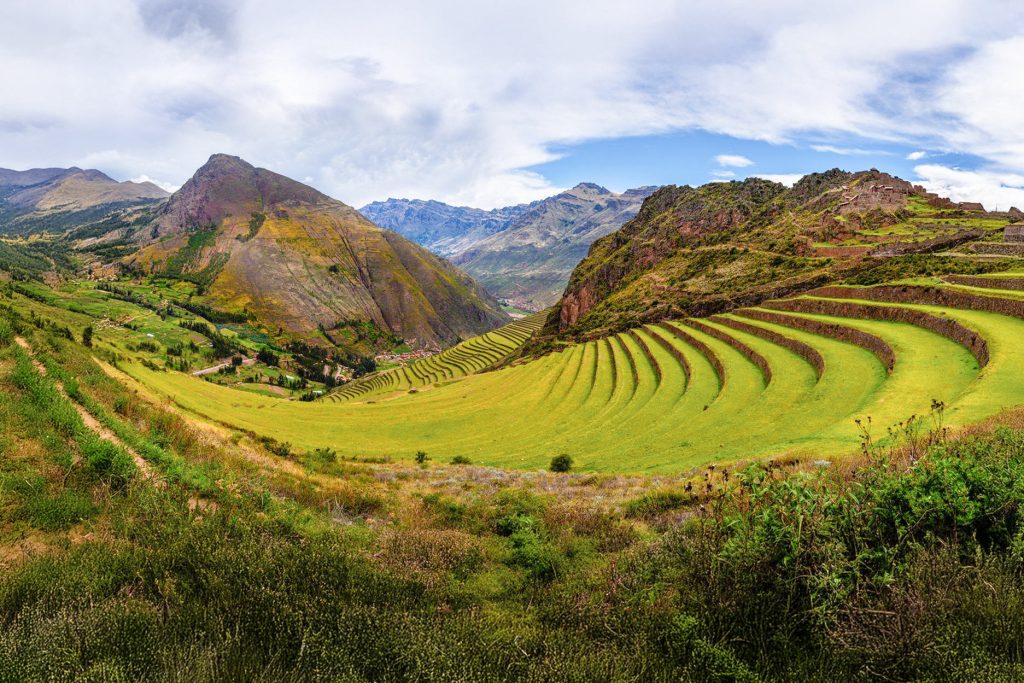
Urubamba: the heart of the Sacred Valley
At the center of the Sacred Valley, surrounded by mountains and fertile fields, lies Urubamba — a town that blends Andean agricultural heritage with modern culinary innovation. Thanks to its mild climate and proximity to the Urubamba River, it’s often called the natural pantry of the valley, producing many ingredients that define Peruvian cuisine.
For those touring Maras and Moray, Urubamba is the perfect stop to enjoy a buffet lunch or gourmet experience. The town is home to luxury restaurants and colonial haciendas turned dining spaces, where local and international chefs reinterpret traditional dishes using organic ingredients grown nearby: Cusco giant corn, quinoa, fresh trout, Andean herbs, and seasonal fruits.
More than just a stopover, Urubamba is a destination in itself. Its gardens, terraces with Andean views, and sustainable culinary projects offer travelers a peaceful moment to savor the authentic flavors of Peru. Dining here means tasting the essence of the Sacred Valley, where every dish celebrates the land, the people, and the soul of the Andes.
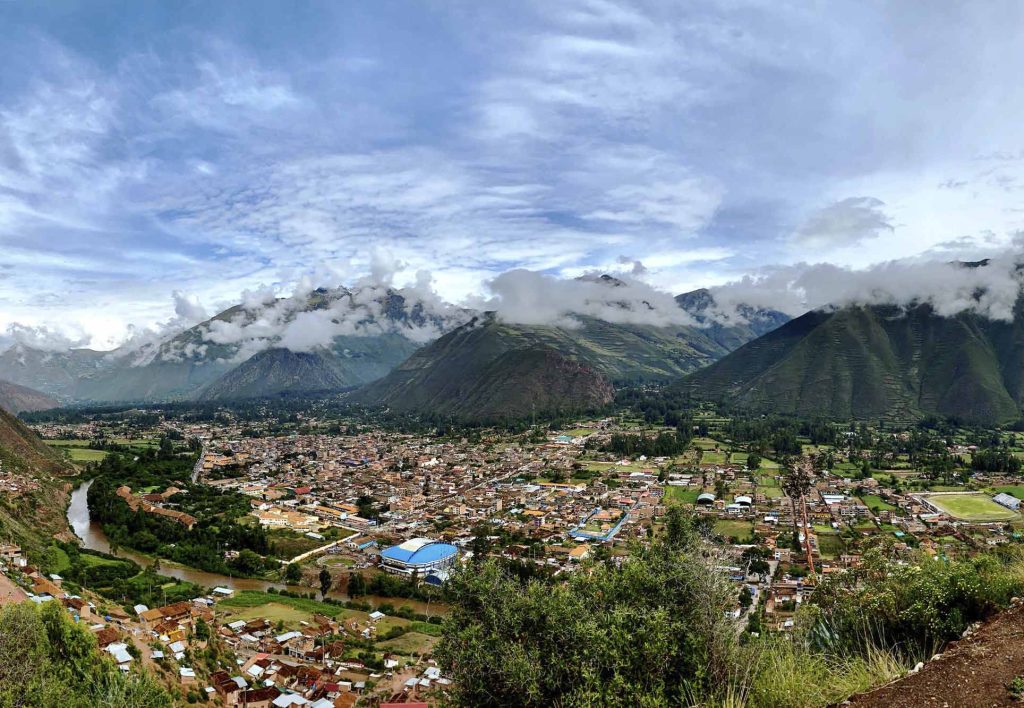
Huaypo Lake: the mirror of the Andes
Between the towns of Maras and Chinchero, in the heart of the Sacred Valley of the Incas, lies Huaypo Lagoon, a place of peace and natural beauty surrounded by snow-capped mountains and fertile farmlands. Sitting at more than 3,500 meters above sea level (about 11,483 feet), this mirror-like lake reflects the Andean sky, creating a landscape that seems straight out of a dream.
Huaypo Lagoon is ideal for adventure lovers and photography enthusiasts. Its calm waters are perfect for paddleboarding or boating, all while admiring the breathtaking views of the Verónica and Chicón mountains. It’s also a wonderful spot for hiking, cycling, or simply enjoying a sunset surrounded by silence and nature.
Thanks to its proximity to Maras and Moray, many Sacred Valley tours include a brief stop at Huaypo, allowing visitors to connect with the serenity of the landscape and experience another side of Cusco. This hidden gem, still little known among travelers, blends the powerful energy of the Andes with a tranquil atmosphere that invites you to pause and breathe deeply.
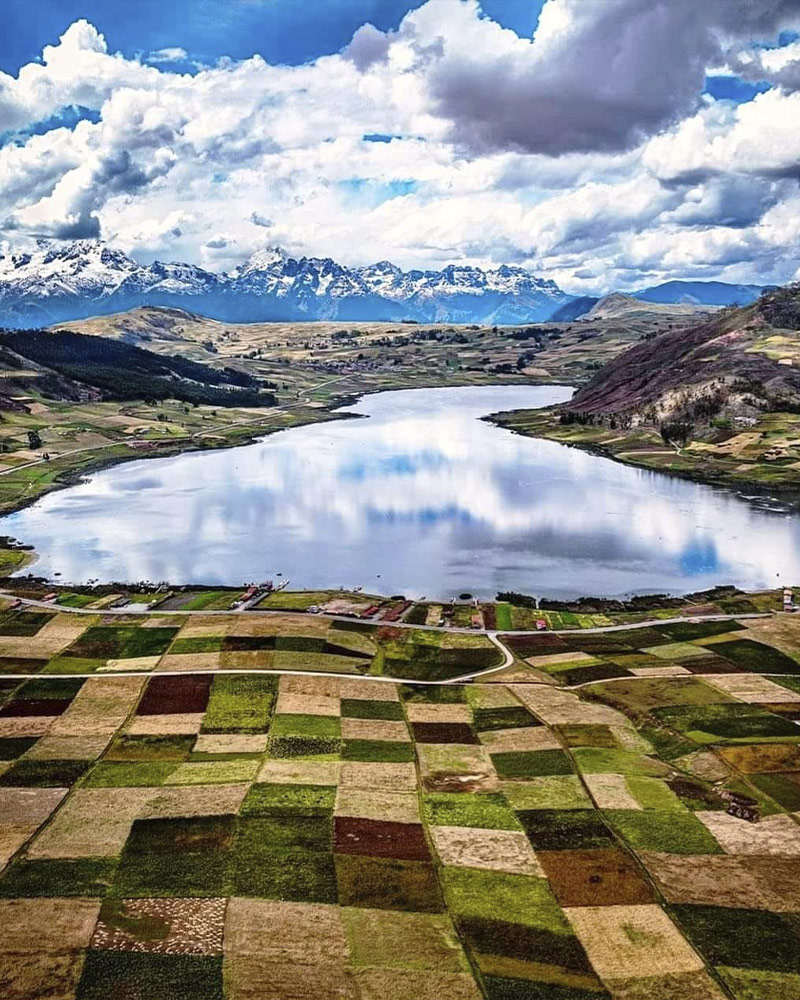
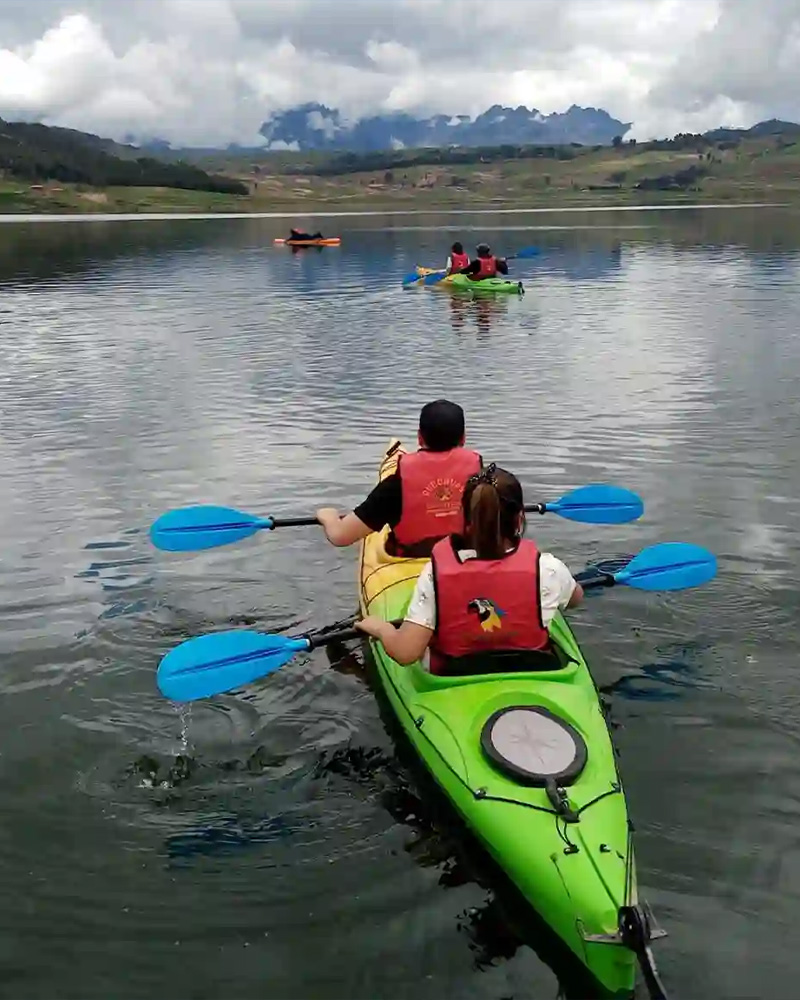
Must-See Stops on Your Maras and Moray Route
The Sacred Valley of the Incas is an experience for all the senses. Amid its natural beauty, its villages preserve traditions that combine art, flavor, and cultural heritage. Here are a few treasures you can discover along your journey:
Artisan Chocolateries of Maras
In the charming town of Maras, artisan chocolate shops invite you to stop and savor the unmistakable aroma of Cusco’s fine cacao. Each chocolate bar blends local ingredients like pink salt from Maras, quinoa, or ají mirasol chili, creating unique flavors that celebrate the creativity and natural richness of the valley. It’s a delicious stop that shows how tradition can be reinvented with elegance and respect for the land.
Silver and Jewelry Workshops in Pisac
In Pisac, art takes shape in handcrafted silver jewelry. Local silversmiths work with techniques passed down for generations, creating pieces that feature Inca symbols and natural motifs. Each item reflects the spirit of Cusco—mystical, refined, and deeply connected to its past.
You can find artisan jewelry shops both in the Pisac Handicraft Market (on Espinar Street) and along Amazonas Street, where local artisans display their one-of-a-kind creations made entirely by hand using ancestral methods.
Gastronomy in Urubamba
At the heart of the valley, Urubamba has become Cusco’s culinary hub. Its fine restaurants and colonial haciendas offer buffet lunches or gourmet experiences that highlight local ingredients like giant corn, fresh trout, quinoa, and Andean herbs. Here, contemporary Andean cuisine celebrates the flavors of the land in a natural setting of gardens and terraces overlooking the Andes.
Typical buffets in Urubamba feature a wide variety of dishes that fuse tradition and creativity. Some of the most popular options include Andean trout ceviche, pepian de cuy (guinea pig stew with native potatoes), and alpaca steak with aromatic herb sauce. Everything is prepared with fresh local produce, allowing travelers to savor the rich culinary heritage of the Sacred Valley of the Incas.
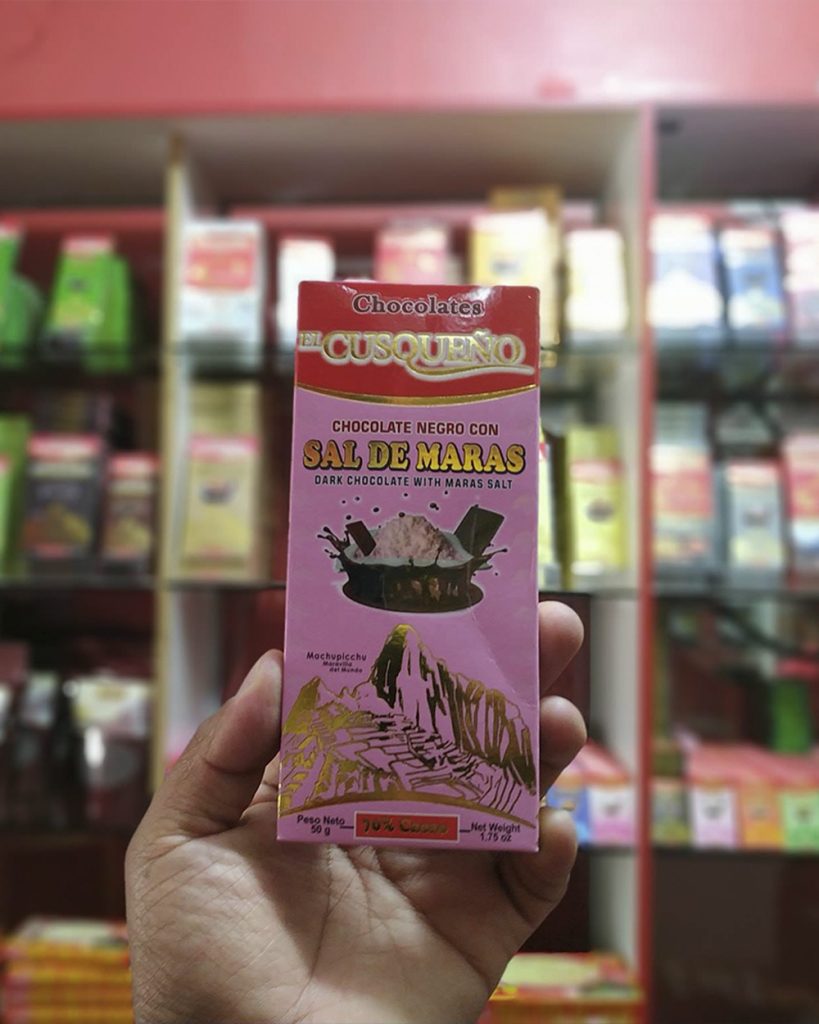

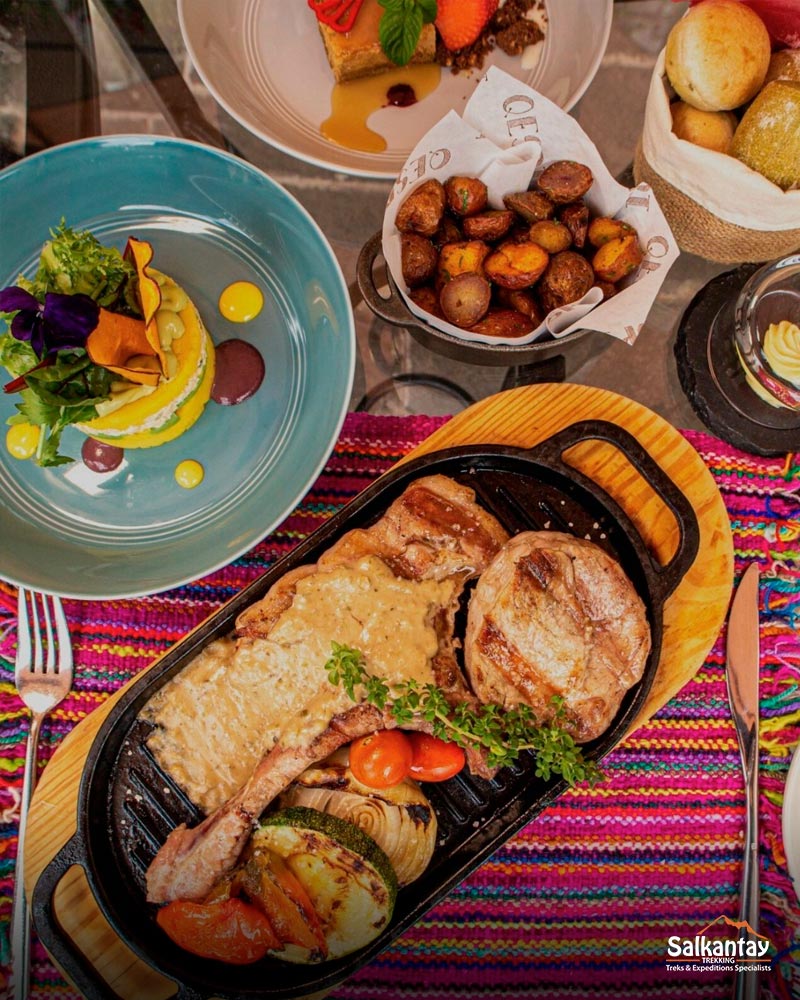
Entry Requirements for Maras and Moray
To visit the main attractions of the Sacred Valley of the Incas, such as the Maras Salt Mines and Moray, it’s essential to know which tickets are required for entry. Below is a breakdown of the passes you’ll need and their approximate costs:
| Attraction | Required Ticket | Approx. Cost | Important Note |
| Moray | Cusco Tourist Ticket (BTC) – Circuit III or Integral | S/ 130 – s/70 (foreign visitors) | Individual entry tickets are not sold; it’s included as part of the BTC. |
| Maras Salt Mines | Direct entry ticket | S/ 20 (foreign)s/ 15 (national) | Not included in the BTC. |
Travel Tip: If you plan to explore more sites in the Sacred Valley, check out our complete guide to the Cusco Tourist Ticket: What is it? And What is it For?
How to Get to Maras and Moray
Visiting Maras and Moray is one of the most popular excursions from Cusco, as both are among the true treasures of the Sacred Valley of the Incas. These two sites — one agricultural and the other natural — reveal the Incas’ ancestral wisdom and their deep connection with the earth. Below, you’ll find the main ways to get there, suited to different budgets and travel styles.
1. On an Organized Tour (The Most Practical and Recommended Option)
Taking a tour to Maras and Moray is the most comfortable and efficient way to visit these two attractions in the Sacred Valley. Local agencies offer different options, which you can also combine with other tourist attractions and activities that will enrich your experience. (See the section: Tours that include Maras and Moray)
Advantages: You don’t need to worry about transportation or routes, and you’ll have a knowledgeable guide who explains the agricultural and spiritual significance of each archaeological site.
2. On Your Own (The Most Budget-Friendly Option)
If you prefer to travel at your own pace, you can also visit Maras and Moray independently from Cusco by combining public transport and local taxis.
| Stage | Transport | Route | Approx. Cost |
| 1. Cusco → Maras Junction | Shared taxi (colectivo) or bus | From Pavitos Street in Cusco, take a colectivo bound for Urubamba and ask to get off at “Ramal de Maras” (Maras junction). | S/ 7 – S/ 15 per person |
| 2. Maras Junction → Moray & Maras Salt Mines | Local taxi (shared or private) | At the junction, you’ll find taxis that take you to Moray, the Maras Salt Mines, and back. Negotiate the fare for the full circuit. | S/ 30 – S/ 50 per taxi (negotiable) |
Disadvantages: This option takes more time and coordination, and you’ll need to negotiate directly with drivers. However, it’s ideal for budget travelers or those who enjoy a bit of adventure.
3. By Private Taxi (The Most Flexible Option)
You can also hire a private taxi for a day trip to Maras and Moray, allowing you to explore at your own pace. Many drivers can include additional stops, such as Chinchero or other Sacred Valley towns.
Approx. cost: Between S/ 100 and S/ 150 (round trip from Cusco, negotiable).
Advantages: Total freedom over your schedule, greater comfort, and the chance to stop whenever you like to take photos or admire the Andean landscape.
Tours and excursions to Maras and Moray
When exploring the Sacred Valley of the Incas, destinations like Maras and Moray can easily become part of a broader experience. Below are some popular routes that include them and help you make the most of your visit from Cusco:
- Maras Salt Mines and Moray – 1 Day:
Focused solely on these two iconic sites, this one-day tour departs from Cusco and visits Moray first, followed by the Maras Salt Mines. It’s a quick and educational trip, perfect for travelers with limited time. - Super Sacred Valley of the Incas – 1 Day:
This comprehensive tour covers the valley’s top attractions—Moray, Maras, Ollantaytambo, Urubamba, and Pisac—all in one day. Ideal for those who want to see as much as possible without rushing the experience. - Maras, Moray & Machu Picchu – 2 Days:
This two-day itinerary begins with Chinchero, continues to Moray’s circular terraces and the Maras salt ponds, and concludes with a guided visit to the magnificent Machu Picchu. Perfect for travelers seeking a blend of culture, nature, and history. - Machu Picchu & Rainbow Mountain – 5 Days:
A more immersive adventure combining the Sacred Valley (including Moray and Maras) with a hike to the spectacular Rainbow Mountain, known for its natural red, ochre, and turquoise hues. - Machu Picchu, Ausangate & Rainbow Mountain – 7 Days:
Designed for those seeking the ultimate southern Peru experience, this seven-day tour includes the Sacred Valley, the snow-capped Ausangate mountain, and the Rainbow Mountain, ending with an unforgettable visit to Machu Picchu. - The Best of Cusco Tour – 7 Days:
A week-long itinerary that offers a complete overview of the Cusco region—visiting Moray, Maras, Urubamba, and Ollantaytambo before reaching Machu Picchu. Perfect for travelers who want culture, archaeology, landscapes, and comfort all in one journey.
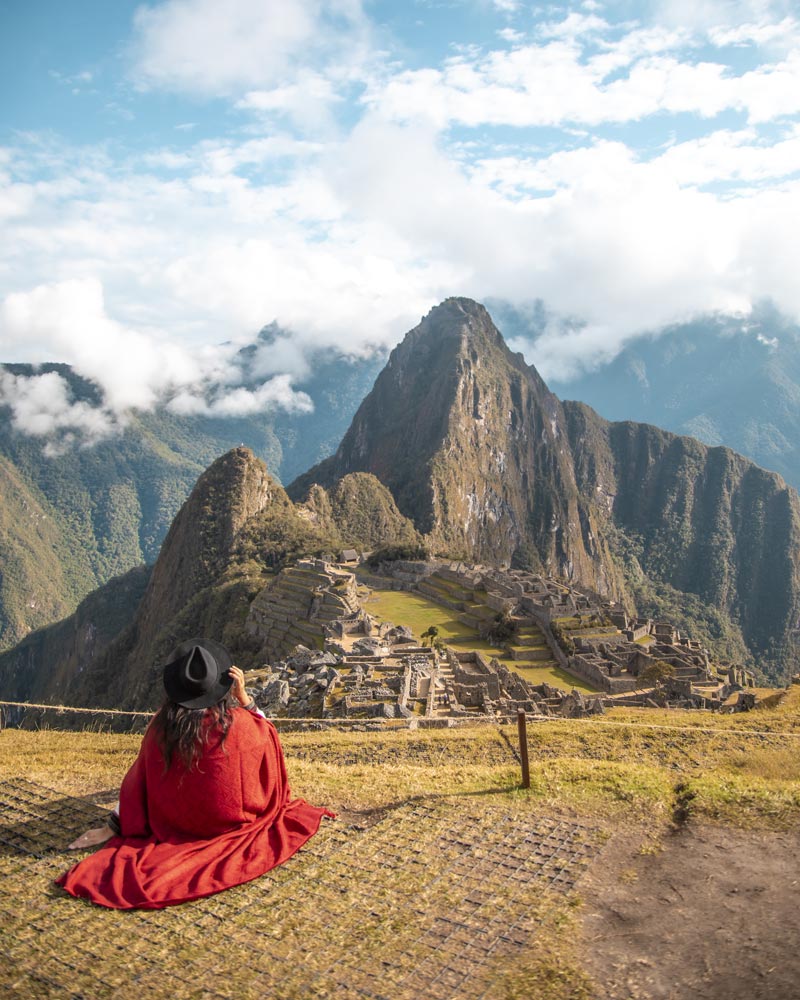

The Eternal Charm of the Sacred Valley
Maras and Moray are archaeological treasures that embody the ancestral wisdom still alive among the Sacred Valley mountains. Those who visit don’t just witness the past—they feel it and are transformed by it.
If you’re planning your next adventure in Cusco, let Salkantay Trekking guide you through the Sacred Valley of the Incas for an authentic experience filled with history, beauty, and unforgettable moments.
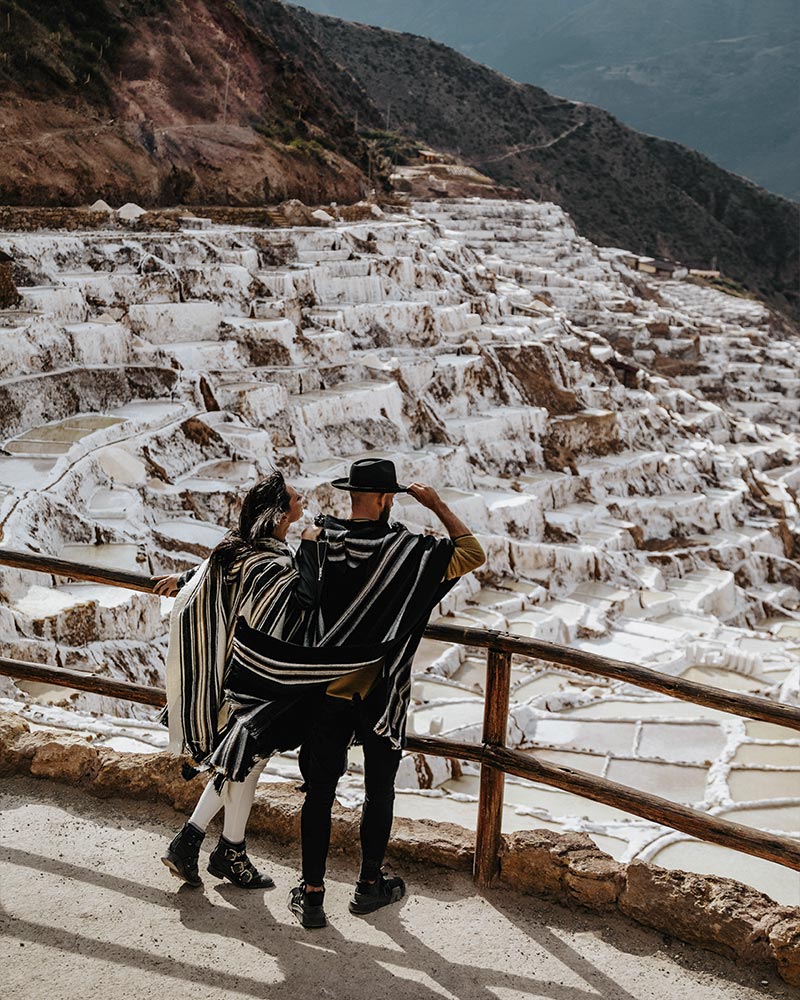
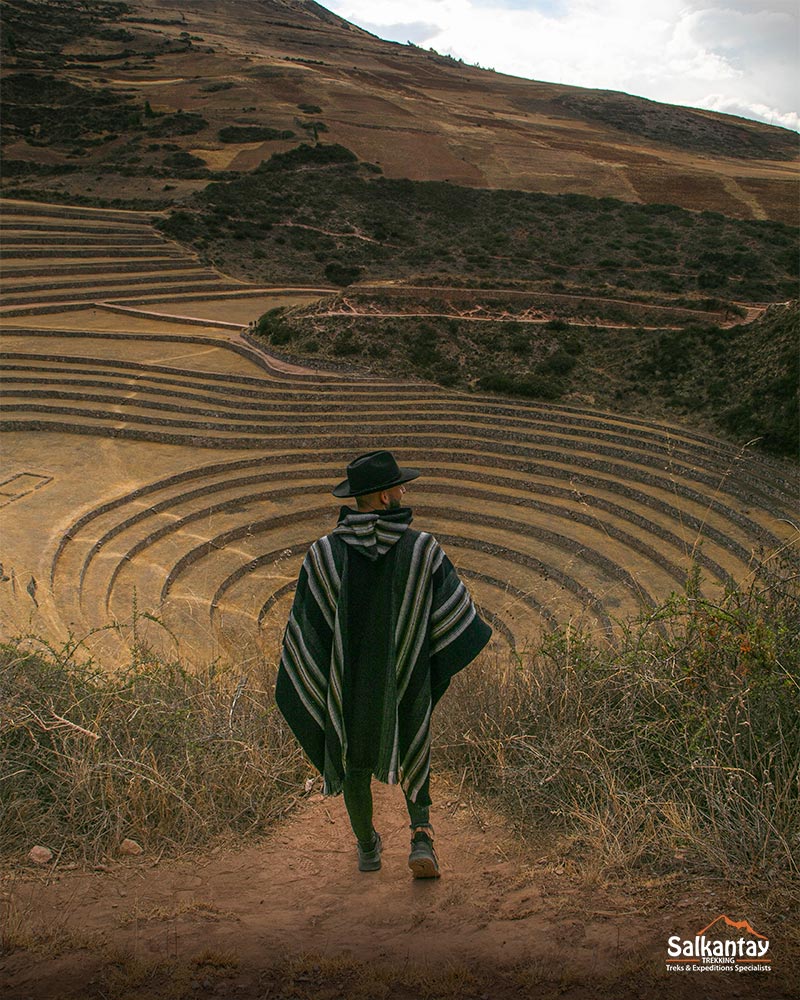
Frequently Asked Questions
1. Where are Maras and Moray located?
Maras and Moray are located in the Sacred Valley of the Incas, about 40 km (24.8 miles) from Cusco, roughly 1 hour and 20 minutes by car. Both sites lie near the town of Maras, between Chinchero and Urubamba, surrounded by farmlands and stunning mountain views.
2. What’s the best time to visit Maras and Moray?
The best time to visit is between May and October, during the dry season when skies are clear and landscapes are vibrant. The rainy season (November to April) brings lush greenery but can make access routes muddy.
3. Can visitors enter the Maras salt ponds?
Since 2019, access inside the salt ponds has been restricted for conservation and food safety reasons. Visitors can still enjoy incredible panoramic views from a nearby lookout point.
4. Why are the Maras salt mines important?
The Maras Salt Mines consist of more than 4,500 terraced pools dating back to pre-Inca times. Fed by a natural saltwater spring, they are still worked by local families who harvest the famous pink Maras salt by hand.
5. What was Moray’s function during the Inca era?
Moray served as an agricultural laboratory where the Incas experimented with microclimates and crops. Each circular terrace had a different temperature, allowing them to adapt plants from various regions to Andean conditions.
6. How long does it take to visit Maras and Moray?
A half-day or full-day tour typically lasts 3–4 hours, giving you time to explore both sites and enjoy the scenery. Many travelers combine the experience with visits to Chinchero, Urubamba, Pisac, or Ollantaytambo.
7. What should I wear or bring?
Wear layered clothing, sunscreen, a hat, sunglasses, and comfortable shoes. At an altitude of around 3,400 m (11,155 ft), it’s important to stay hydrated and walk at a relaxed pace.
8. Can I visit Maras and Moray on my own?
Yes. While most travelers join guided tours from Cusco or Urubamba, you can rent a car or hire a private driver. However, having a local guide helps you understand the history and cultural significance of each site.
9. What other places can I visit nearby?
Nearby you’ll find Chinchero, known for its weaving workshops; Urubamba, famous for its gastronomy; Ollantaytambo, with its impressive fortress; and Huaypo Lagoon, perfect for outdoor activities or relaxation.
10. Which tours combine Maras and Moray with Machu Picchu?
Popular options include the Maras–Moray–Machu Picchu (2-day) tour, the Super Sacred Valley (1-day) tour, or longer itineraries like The Best of Cusco (7 days). Each one offers a perfect balance of nature, history, and Inca heritage.


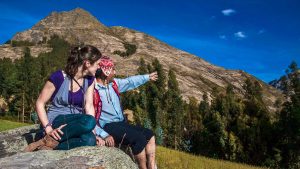
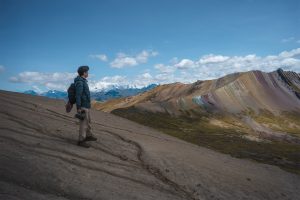
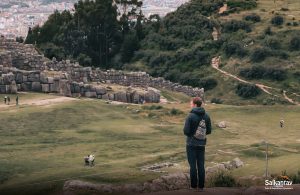
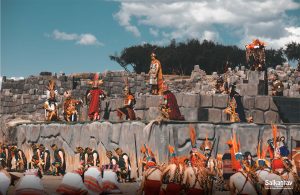
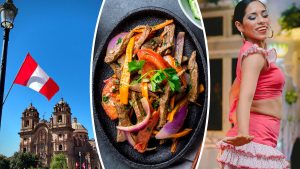

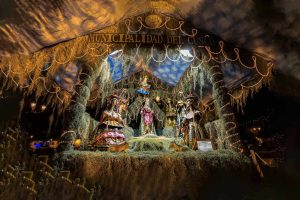
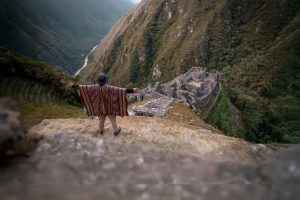
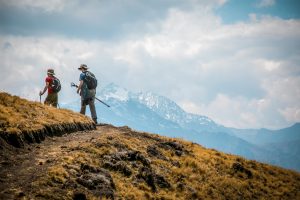
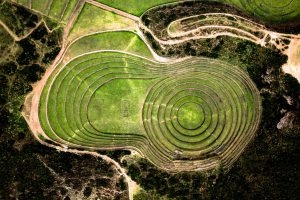
Leave A Reply